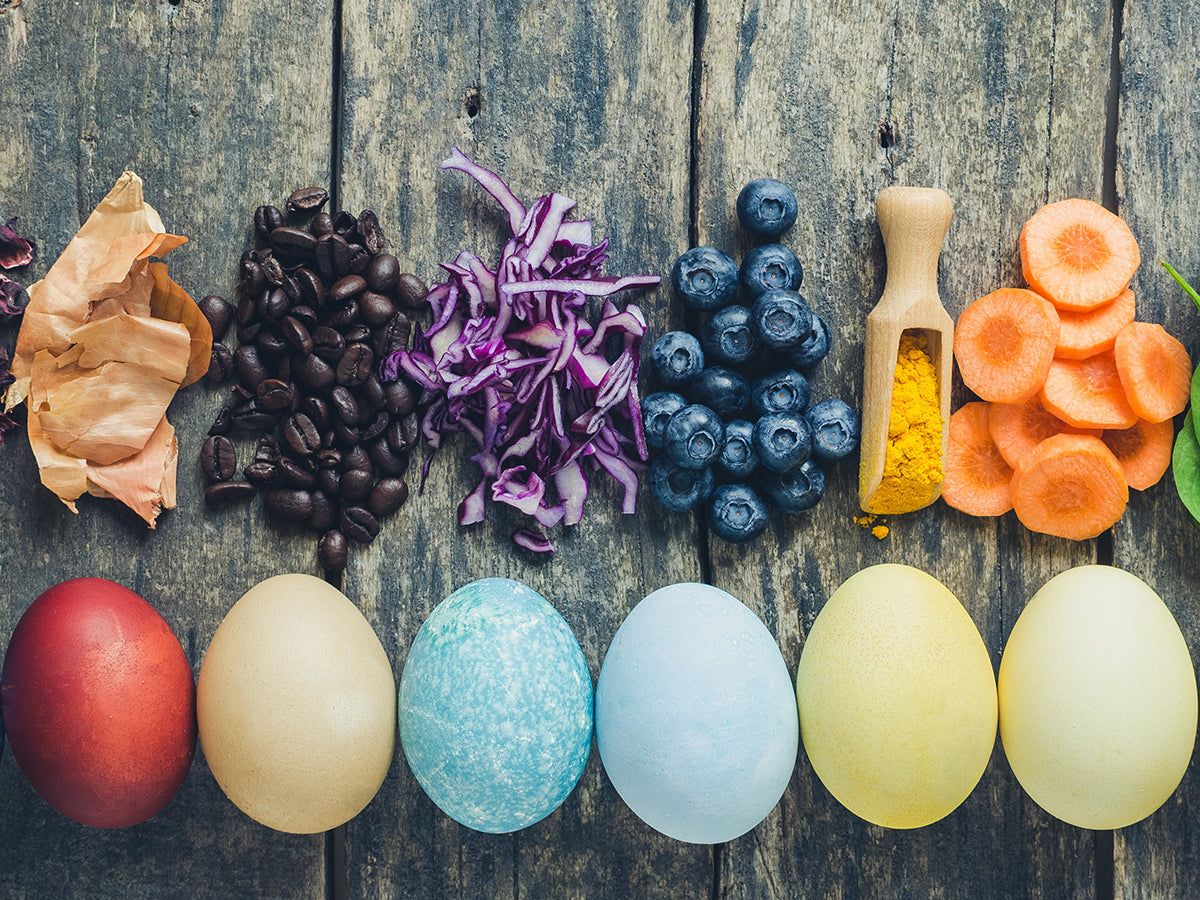NATURAL VS. ARTIFICIAL FOOD COLORING: WHAT YOU NEED TO KNOW

If you're like many of us, you love to dress up birthday cakes, holiday cookies, cupcakes, and other treats with a splash of color for special occasions. Even beverages get the food coloring treatment when it’s time to celebrate—after all, what would a St. Patrick’s Day party be without a cold glass of green beer?
Food coloring is commonly used in the commercial production of everything from candy to wine. Children are especially drawn to colorful foods, which is why many products containing color additives—like candy, cupcakes, cookies, artificially colored juices, and sodas—are targeted toward them. However, with more food products being imported from countries with less stringent regulations, parents are understandably growing more concerned about the safety of what their families consume, especially regarding the impact on children.
Regulation and Safety of Artificial Food Coloring
The U.S. Food and Drug Administration (FDA) has conducted extensive testing on artificial food colorings and has not found direct links between certified food color ingredients and disease. However, some individuals are allergic to synthetic ingredients commonly used in artificial dyes, such as Red 40 and Yellow 5. That’s why we can’t stress enough the importance of reading product labels and ingredient lists. Always check whether food colorings—both natural and synthetic—are FDA certified (they will be labeled with “FD&C” before their names) and ensure there are no allergens that could be harmful to you or your family.
According to the FDA:
“The totality of scientific evidence indicates that most children have no adverse effects when consuming foods containing color additives, but some evidence suggests that certain children may be sensitive to them,” the agency said, noting it will “continue to evaluate emerging science to ensure the safety of color additives approved for use.”
In response to growing health concerns, there have been significant regulatory changes. The FDA has announced it will revoke authorization for FD&C Red No. 3 as a food additive starting January 1, 2027. Additionally, West Virginia will become the first U.S. state to ban all artificial food dyes beginning January 1, 2028. These updates reflect an increasing demand for cleaner ingredients and more natural alternatives in both consumer and legislative landscapes.
Natural Food Colors: A Cleaner Option
Although artificial food colorings are generally safe to consume within FDA guidelines, natural food colors have been growing in popularity over the past decade. These colors are derived from dyes found in nature and are a great option for health-conscious consumers or those with sensitivities to artificial dyes. However, natural food colors are generally less resistant to light and heat, making them better suited for low- or no-heat applications and products that won’t be exposed to bright lighting for extended periods.
Where Do Natural Food Colors Come From?
Here are some of the most common sources of natural food dyes by color:
-
Red: Beet, Pomegranate
-
Pink: Raspberry
-
Orange: Carrot, Paprika
-
Yellow: Turmeric, Saffron
-
Green: Chlorophyll, Matcha, Spinach, Parsley
-
Blue: Purple Cabbage, Spirulina
-
Purple: Blueberry, Purple Carrots, Ube, Açaí
-
Brown: Coffee, Cocoa, Cinnamon
-
Black: Activated Charcoal, Squid Ink, Black Cocoa
Although used in small quantities, natural food dyes can add nutritional value to finished food products. For example, the main ingredient in Chefmaster Natural Pink Liqua-Gel® food color is beet, a root vegetable rich in nitrates and known to support cardiovascular health. Other fruits and vegetables used in natural dyes, such as carrots and blueberries, are packed with vitamins and antioxidants.
Can I Make My Own Natural Food Colors at Home?
Yes, absolutely! There are plenty of recipes and tutorials available online. However, the process can be time-consuming, and results can vary depending on the ingredients used and their seasonality. Homemade natural food colorings tend to have a shorter shelf life than store-bought options and achieving consistent colors from batch to batch can be tricky. Still, it’s a healthy and rewarding activity if you're willing to put in the effort.
What Types of Natural Food Coloring Can I Buy?
If you prefer ready-to-use natural food colorings, they’re available in both powder and liquid forms online and in stores. It's best to store them in a cool, dark place, away from heat and sunlight.
-
Powdered natural food coloring usually comes in small packets or pouches. It is less light-stable and may fade in under 24 hours when exposed to sunlight, making it less ideal for decorating.
-
Natural liquid gel food coloring is water-based and often contains glycerin, similar to artificial gels. It is more resistant to light and easier to use, with less mess.
-
Natural airbrush food coloring is water-based and specifically designed for use with an airbrush gun.
Both our Natural Liqua-Gel® and Natural Airbrush food coloring lines have been specially formulated for better light stability and color retention than most natural colorings available on the market.
Why Are Natural Food Colorings Less Vibrant and More Challenging to Use?
Natural food dyes in their raw form often vary in color intensity due to factors such as the source of the dye, where it grows and under what conditions (weather, humidity, soil...) and how they are being extracted (most natural food dyes are extracted via chemical processing).
Natural food colorings are highly sensitive to heat, light, and pH (acidity), which impacts their stability, vibrancy and consistency. The range of colors is also more limited since fewer natural ingredients can be used to produce dyes.
When exposed to heat or bright light, natural food dyes may fade or change color—reds may turn brown, purples may fade, and so on. For this reason, they’re best suited to non-heat applications like icing or low-heat treats like meringue cookies.
Additionally, natural dyes react differently depending on the pH of the food. Some prefer an alkaline base, others an acidic one. This means the same food coloring could turn pink in one recipe and bluish-purple in another. That’s why many natural icing recipes call for vanilla extract or no flavoring at all. Something like lemon extract could alter the pH and change the final color, which can be very helpful to increase the vibrancy of some natural red food colorings but could ruin other colors.
Conclusion
Bottom line: using natural food colorings is more complex than it may seem. Even large food manufacturers must tweak their recipes for each color. In fact, many use different icing formulations for every shade they produce. While Chefmaster Natural Food Colorings are engineered for better consistency and performance than most homemade or off-the-shelf alternatives, some experimentation will still be required—and results may vary from those achieved with artificial dyes.
We understand that working with natural colorants can feel intimidating, especially if you’re just starting out. That’s why our team at Chefmaster is here to support you every step of the way. Our online Chefmaster Academy offers a growing library of resources, tips, and tutorials to help you get the best results from our natural products. And if you’re developing a new industrial recipe or product and need expert insight, our in-house R&D department is always happy to collaborate.
Whether you’re a home baker, small business, or food manufacturer, we’re here to help you make the switch to natural colorings with confidence and creativity.
DOWNLOAD PDF
